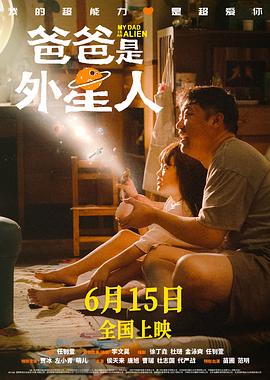йҰ–йЎө В» еҫ·жӢүе…Ӣзҡ„еӣһеҪ’ В» еҫ·жӢүе…Ӣзҡ„еӣһеҪ’
еҫ·жӢүе…Ӣзҡ„еӣһеҪ’

еҫ·жӢүе…Ӣзҡ„еӣһеҪ’
- дё»жј”пјҡ
- жӢүеӨҡдёҮВ·еҚўеҚЎеӨ«ж–Ҝеҹә еҸӨж–ҜеЎ”еӨ«В·з“ҰжӢүиө« иүҫзұідёҪеЁ…В·з“ҰиҗЁзәҰеЁғ еЁҒе»үВ·жіўжҙӣе°ј Jela Buckova Jozef Cierny Pavel Chrobak зұіеә“жӢүж–ҜВ·жҙӣиҝӘжҙҘж–ҜеҮҜ Ivan Macho JГЎn Mildner Andrej Mojzis Jan Pelech еҚўеӨҡз»ҙзү№В·иө–зү№е°” ж–Ҝзү№еҮЎВ·е…Ӣз»ҙеӯЈе…Ӣ Milan Mach
- еӨҮжіЁпјҡ
- HDдёӯеӯ—
- зұ»еһӢпјҡ
- еү§жғ…
- еҜјжј”пјҡ
- зҲұеҫ·еҚҺВ·ж јиҺұзәі
- еҲ«еҗҚпјҡ
- Dragon Returns
- жӣҙж–°пјҡ
- 25-04-02/е№ҙд»Јпјҡ1968
- ең°еҢәпјҡ
- е…¶е®ғ
еҝ«иҪҰиө„жәҗжҷҡй«ҳеі°жңҹеҸҜиғҪеҚЎйЎҝиҜ·иҖҗеҝғзӯүеҫ…зј“еӯҳдёҖдјҡи§ӮзңӢпјҒ
зӣёе…іи§Ҷйў‘
- 1.е¬·е¬·пјҒйҘ¶е‘Ҫе•Ҡе…Ё68йӣҶ
- 2.2021е№ҙдёӯеӨ®е№ҝж’ӯз”өи§ҶжҖ»еҸ°жҳҘиҠӮиҒ”ж¬ўжҷҡдјҡжӣҙж–°HD
- 3.иөҢйңёзІӨиҜӯе®Ңз»“
- 4.еҸҚй»‘е…Ҳй”ӢзІӨиҜӯе®Ңз»“
- 5.зҘһиҜқд»»еҠЎз¬¬дәҢеӯЈе·Іе®Ңз»“
- 6.жіўеҗүдәҡ家ж—Ҹ第дәҢеӯЈе·Іе®Ңз»“
- 7.еҗҺзҝјејғе…өе·Іе®Ңз»“
- 8.еҗҚй…ҝ家ж—Ҹ第дёҖеӯЈе·Іе®Ңз»“
- 9.й“ҒиҜҒжӮ¬жЎҲ第е…ӯеӯЈе·Іе®Ңз»“
- 10.йҳҝжіўзҪ—11еҸ·HDдёӯеӯ—
- 11.жёҗеҶ»дәәз”ҹHDдёӯеӯ—
- 12.зҺ©е‘ҪиӯҰиҪҰHDдёӯеӯ—
- 13.зӢӮзҠ¬з—…HDдёӯеӯ—
- 14.жғҠйӯӮи®°HDдёӯеӯ—
- 15.жҒ¶йӯ”зҡ„иүәжңҜ2пјҡйӮӘйҷҚHDдёӯеӯ—
- 16.дёҠеёқзҡ„ж—Ёж„ҸHDдёӯеӯ—
- 17.银幕иғҢеҗҺHDдёӯеӯ—
- 18.е–·зҒ«еҘійғҺHDдёӯеӯ—
- 19.дә”еӨ©HDдёӯеӯ—
- 20.дёҖи·ҜйЎәйЈҺHDдёӯеӯ—
гҖҠеҫ·жӢүе…Ӣзҡ„еӣһеҪ’гҖӢеҶ…е®№з®Җд»Ӣ
дёҺ(yЗ” )Stefan Uherе’ҢElo HavattaдёҖ(рҹ”ұ)ж ·(рҹ•°)пјҢEduard Grecnerд№ҹ(рҹ—ј)жҳҜ60е№ҙд»Јж–Ҝжҙӣ(luГІ )дјҗе…Ӣж–°жөӘжҪ®з”өеҪұзҡ„зј”йҖ (zГ o )(рҹҳҺ)иҖ…д№ӢдёҖгҖӮд»–зҡ„дёүйғЁеҪұзүҮ(рҹ—„)гҖҠдёҖе‘Ё(рҹ•–)дёғеӨ©гҖӢпјҲ1964пјүгҖҠе°јз»’(rГіng )жңҲдә®гҖӢпјҲ(рҹҺҝ)1965пјүе’ҢиҝҷйғЁгҖҠеҫіжӢүе…Ӣзҡ„еӣһ(huГӯ )еҪ’(рҹӨҜ)гҖӢйғҪжҳҜж–Ҝ(рҹ”Ҡ)жҙӣдјҗе…Ӣж–°жөӘжҪ®з”өеҪұзҡ„(рҹҘҒ)д»ЈиЎЁ(biЗҺo )дҪңгҖӮиҝҷйғЁеҸҷдәӢ(shГ¬ )ж–№жі•зӢ¬зү№еёҰжңүжҳҺжҳҫ(xiЗҺn )(рҹҘҺ)ж„ҸиҜҶжөҒйЈҺ(рҹҷӮ)ж јзҡ„й»‘(hД“i )(вңӢ)зҷҪеҪұ(рҹҸӮ)зүҮ(piГ n )з”ҡиҮій—ҙжҺҘ(jiД“ )(рҹҷ„)еҪұ(гҠҷ)е“ҚеҲ°дәҶеҗҺжқҘжі•еӣҪ(guГі )еҜј(dЗҺo )жј”(yЗҺn )ж јйҮҢиҖ¶еңЁжҚ·е…ӢжӢҚж‘„(рҹӨІ)зҡ„дёӨйғЁеҪұзүҮ(piГ n )гҖҠиҜҙ(shuЕҚ )и°Һ(huЗҺng )зҡ„(рҹҺӢ)дәәгҖӢе’ҢгҖҠEden and AfterгҖӢгҖӮгҖҖ(рҹҚ‘)гҖҖA special place in the development of feature films is reserved for Eduard Grecner, the creator of just one good film, Dragon Returns (Drak sa vracia, 1967), titled after the nickname of the lead character. After his initial work with Uher, Grecner made his mark as a proponent of the so-called intellectual film, the antithesis of the sociologically, or rather, socially critical film. Grecner's great role model was Alan Resnais, a young French filmmaker who sought to introduce Slovakia to the idea of film as a labyrinth in which meanings are created not by stories, but by complex configurations of dialogue, shots, and various layers of time, thus differentiating film from both literature and theater. In Dragon ReturnsвҖ•the story of a solitary hero who is needed by villagers living far in the mountains, but who is rejected by them at the same time because of his detachmentвҖ•Grecner brought the tradition of lyricized prose to life through a whole series of formal aesthetic techniques. Alain Robbe-Grillet immediately developed this idea in the film shot in Bratislava The Man Who Lies (Slovak Muz, ktory luze; French title L'homme qui ment; 1968), and perfected it in Eden and After (Eden a potom, 1970).вҖҰвҖҰ







